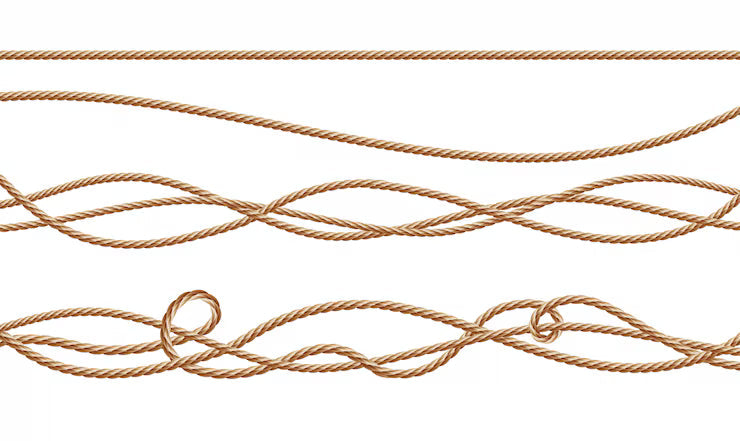Ropes
Ropes: The Unsung Heroes of Strength, Safety, and Style

From ancient sailing ships to modern climbing walls, ropes have been quietly holding the world together—literally. These woven strands of fiber are more than just tools; they’re lifelines, connectors, and even design elements. Whether you're tying down a load, scaling a cliff, or crafting a rustic centerpiece, there's a rope for the job.
What Is a Rope?
A rope is a length of strong cord made by twisting or braiding fibers together. These fibers can be natural (like cotton, jute, or hemp) or synthetic (like nylon, polyester, or polypropylene). The construction method—twisted, braided, or kernmantle—affects its strength, flexibility, and use.
Common Uses of Rope
- Climbing & Rescue: Dynamic ropes absorb shock; static ropes offer stability.
- Marine & Boating: Ropes resist water and salt, ideal for mooring and rigging.
- Camping & Hiking: Essential for tents, tarps, and bear bags.
- Crafts & Decor: Macramé, rope shelves, and nautical-themed accents.
- Agriculture & Industry: Used for towing, lifting, and securing loads.
Types of Rope
| Rope Type | Material | Key Features | Best Use |
|---|---|---|---|
| Nylon | Synthetic | Strong, elastic, abrasion-resistant | Climbing, towing |
| Polypropylene | Synthetic | Lightweight, floats on water | Marine, water sports |
| Cotton | Natural | Soft, flexible, biodegradable | Crafts, decor |
| Jute/Hemp | Natural | Rustic look, eco-friendly | Gardening, rustic decor |
| Polyester | Synthetic | UV-resistant, low stretch | Outdoor use, rigging |
Rope Care Tips
- Store in a cool, dry place
- Avoid prolonged exposure to sunlight (UV damage)
- Inspect regularly for fraying or wear
- Clean with mild soap and water—no harsh chemicals
Final Thoughts
Ropes may seem simple, but they’re engineered for strength, safety, and versatility. Whether you're scaling mountains or styling your living room, the right rope makes all the difference. So next time you tie a knot, take a moment to appreciate the craftsmanship behind those twisted fibers.




